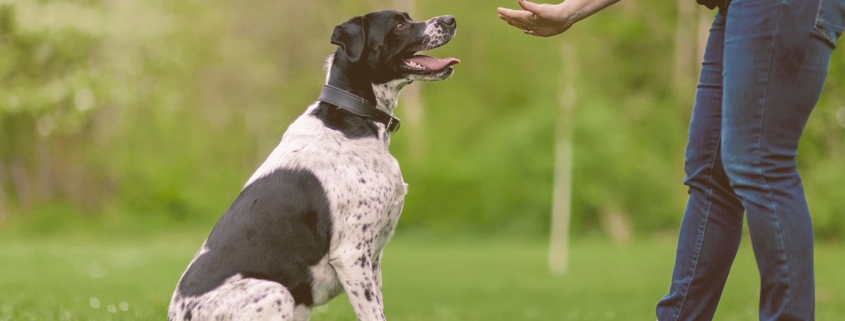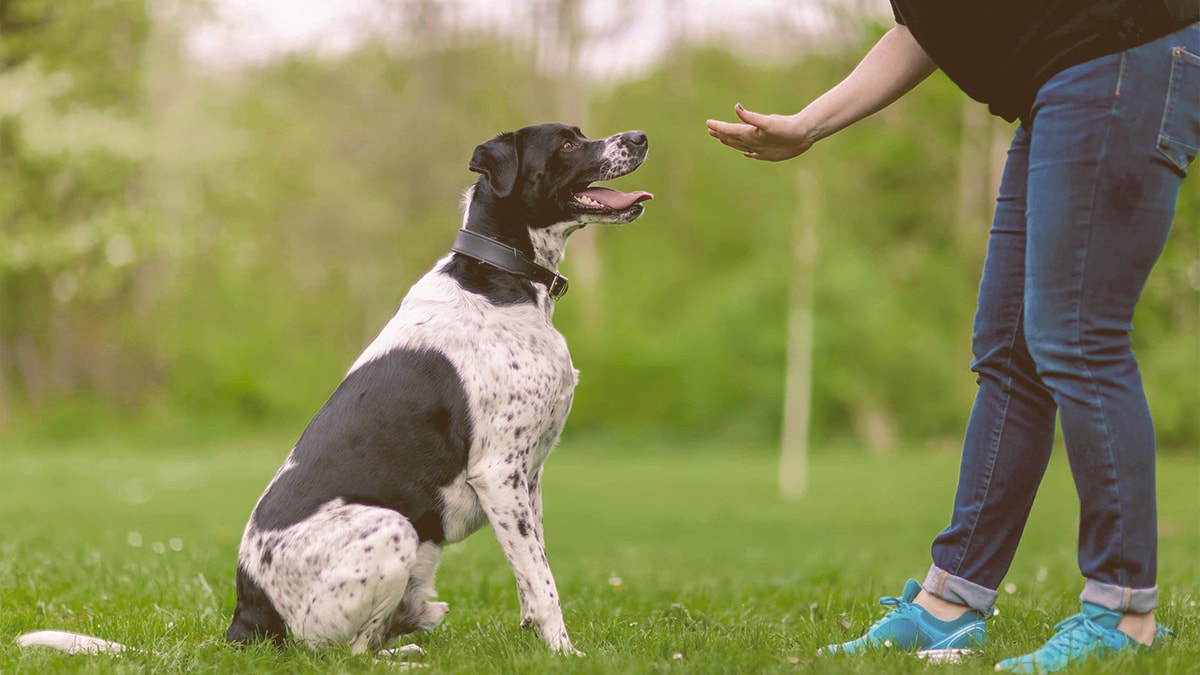
How to Train Dogs with Hand Signals
Alex Vicente • Updated on August 1, 2023
- This review contains affiliate links. Read more here.
- Not a substitute for professional veterinary help.
Living with your dog is so much more fun and enriching when you can actually communicate with one another.
One of the most effective ways to train your dog to listen to you is to use hand signals.
You may think that is difficult, but you would be amazed at how well your pet will begin to respond to you if you are consistent and patient with them.
You might already have your dog trained to respond to your voice. Now it is time to give hand signals a try.
If you have ever wondered how to effectively go about this in a way that will not strain the relationship between you and your best friend, continue reading.
You are about to discover some great tips to help you train your dog with hand signals.
Table of Contents
The Hand Signals You Will Want to Use
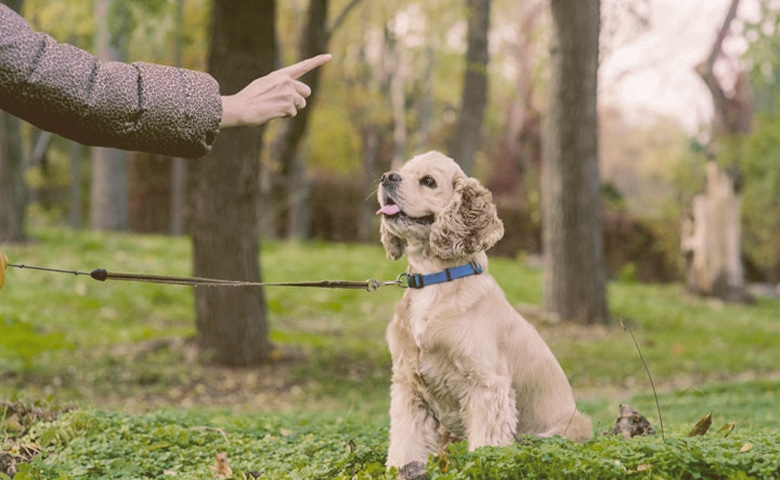
You can teach a dog to associate virtually any desired behavior with a corresponding hand signal. There are certain recommended hand signals that both you and your dog can easily learn to use together. Here are some of the most important that you will want to start focusing on.
Take Notice and Watch
This should probably be the first-hand signal that you teach your dog. It is a signal that indicates to your dog that you are about to tell them something. No matter what you and your dog are doing, you can use this signal to get them to stop and look at you.
To get your dog to pay attention to what you are about to say, take your finger and point to your eye. You may need to do this a few times until your dog notices you and stops what they are doing. It is also important to be consistent when using this signal, as it should be followed up with one of the other commands that you are about to learn.
Sit Down
This is the command that you are probably most familiar with already. It seems that it is almost universally understood. A simple, firm voice almost always does the trick, but there are many reasons to want to use a hand signal instead.
To get a dog to sit down, you will want to begin by holding an open palm out in front of your body. Then, take your hand and move it upwards. This will help your dog to start to understand that you would like him to sit down.
Stop and Lie Down
There are times when you need to get your dog to calm down, perhaps after a round of vigorous exercises or when guests arrive. One effective way to do that is to have them lie down. This is different from sitting as you will be asking them to get all four paws down on the ground, with their belly resting comfortably there as well.
To do this with your hands, you will want to begin by taking one of your fingers and holding it horizontally in front of your chest. You will then flick your wrist 90 degrees down. Do this slowly and make a move towards the floor. Once the dog understands, they will begin to lie down on command.
Stay in Place
While this command might seem very similar to sit, it has some stark differences. There are times when you need your dog to stay right where he is. This might be when you start to encounter people while walking on the street or when you spot some type of danger in the yard.
To use your hands to get your dog to stay in place, you will want to once again have your palm out in front of your chest. The difference this time is that you want it to face away from you and towards your dog.
Come to Me
Since your dog is naturally your best friend, there are plenty of occasions where you will want him to come over to you. Simply hold your hand open with your palm facing in front of you to achieve it.Then, in a diagonal fashion, bring your hand up to the opposite shoulder.
Stand Up Now
When you have told your dog to sit, you need to be fair about it and let him also know when he can stand up again. Thankfully, there is a hand signal for that as well.
To begin, just take your hand and hold it at your side. As you do so, you will want to make sure that the palm is facing in front of you and that it is open. You will then take your back sharply. Keep repeating the process until your dog understands that he can stand up now.
Stop and Heel
It is no secret that dogs get excited. That is one of the many reasons that we love to have them around. However, there are times when you need to get your dog to calm down and heel.
To do that, just hold your hand close to your hip. You will then tap your hand on your hip or move it in a circular motion right there. Either way will indicate to your dog that you want them to come over to you and heel.
Go Ahead and Take It
You might have something that you are holding, and it is for your dog. Something fun and useful is to be able to call your dog over to you and take the item. That can be done rather easily.
To get your dog to take an object from you, hold your hand in front of the dog with your palm open. Once your dog sees you do that, close your palm into a fist, and that will indicate to your dog that you want them to take it.
Drop That Item
Not everything in the world is meant to be in your dog’s mouth. Think of your shoes, socks, broken sticks, and just about anything else that you can imagine. Dogs love them, but you just want them to drop them and leave them alone.
To get them to do that, you will want to hold your hand out in front of your dog. Make sure your hand is in a fist as you do so. Once they see your fist, open it into a palm. This will serve as an indication that you want them to drop the item immediately.
Go Free
Dogs get tired of learning and paying attention to you just as much as you used to grow fidgety right before gym class. To let your dog know that they are off the hook and free to go, there is a hand signal that you can give them.
You can put one of your hands up near your shoulder. Make sure that your palm is open, facing up, and going forward so your dog can see it. This replicates a shrugging motion. That will tell your dog that they are free to go and start doing their own thing in the yard or house once again
Helpful Suggestions When Teaching Hand Signals to Your Dog
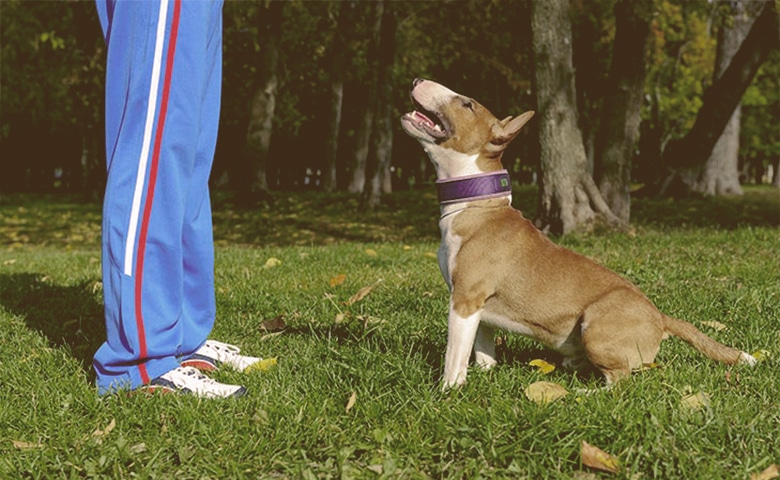
You will need to be patient when teaching your dog to follow hand commands. It is like teaching them a new language, so be calm and work with them through the process. If you do that, you will find that it is much like getting them to respond to your voice commands, and it will eventually become second nature to both of you.
In order to get your dog to respond the way that you want him to, you will need to start out by doing the following:
- Demonstrate – It is important that you start out using signals to train your dog by demonstrating the behavior that you would like them to perform. Your dog needs to see the behavior in action along with the proper hand signal before they can do it for you.
- Be patient – You need to remain calm during the training process. Getting frustrated will only bring about negative results in the end. However, positive results will be seen in time if you remain patient and you are consistent in your demonstration of hand signals and associated behaviors.
- Use rewards in the beginning – If you have ever questioned the effectiveness of using rewards to elicit certain behaviors, you will be sold once you use them with your dog. When your dog does the correct action at the right time, give him a reward. It will reinforce the notion that he is doing the right thing.
- Phase-out the rewards – You do not want to give rewards forever. It is important that your dog eventually start obeying your hand signals just because it is the right thing to do. Once you are convinced that he understands what is expected of him, start to cut back on the rewards.
If you are ready to get started, here a few other pieces of advice that should help you in your efforts to train your dog in the use of hand signals.
Make Sure You Have Your Dog’s Attention
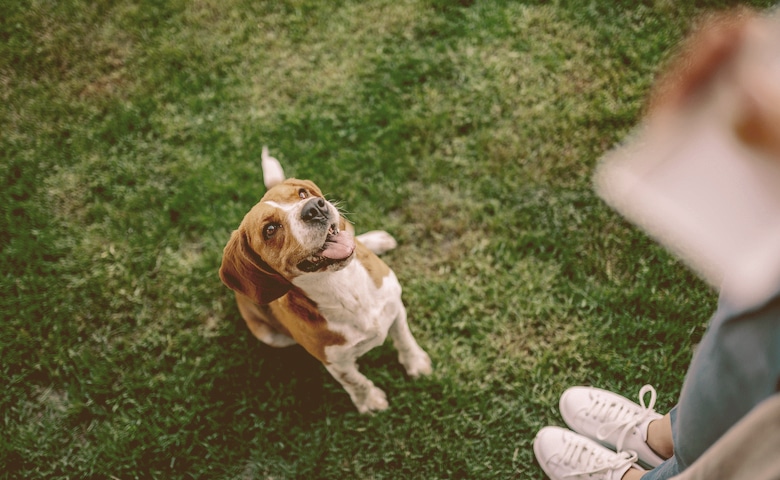
It does you no good to start covering hand signals with your dog if you do not first have their full attention. You will not want to try to cover these, for example, immediately following a vigorous play session, as your dog will be too excited and energetic.
The ideal environment to do the training is one that is free of distraction. Do not have other dogs around. It should just be you and your dog. Once your pet becomes familiar with the signals, then you can really have some fun and ramp up the excitement level. However, quiet and distraction-free is key at the outset.
Using a Clicker is Effective
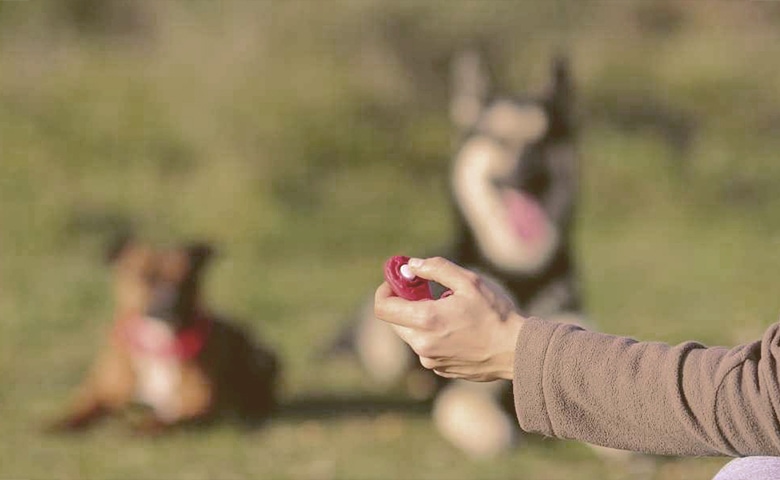
If you are struggling in your efforts to get your dog’s attention, feel free to use a clicker. This is a noise that will draw your dog towards you and get him ready to listen.
A clicker is often effective at getting your dog to look at you. Clearly calling his name can be quite helpful as well in the initial stages. The key is to generate some type of sound that your dog begins to associate with the fact that playtime is over and now you have something that you want him to do.
Use Verbal Commands at the Same Time
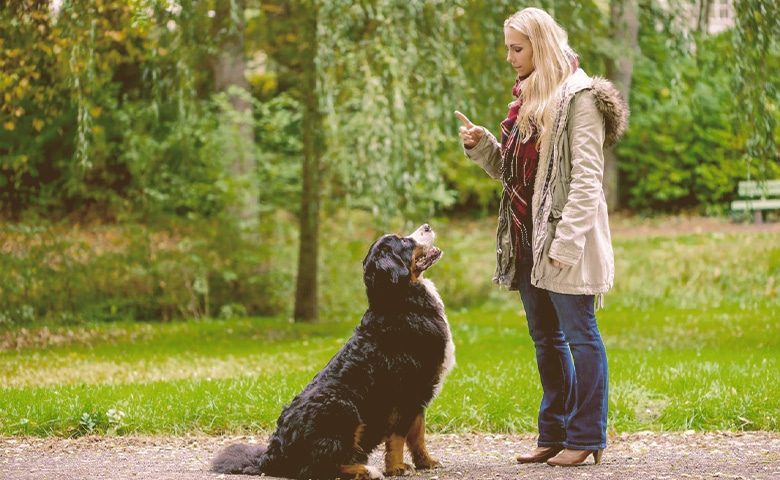
You may have already trained your dog to follow commands that you give him verbally. This is great. You can now use those commands to go along with the hand signals as you begin to train him in this way.
To do that, you will have your hand signals ready as you issue a voice command. This serves as a type of demonstration that your dog will begin to understand is a new way that you will issue commands. The key is to begin to phase out using the voice commands after a short while so that your dog obeys only the hand signals and not your voice.
Do Not Teach Verbal Commands and Hand Signals at the Same Time

If you have not trained your dog at all to this point, it is important that you not try to teach both verbal commands and hand signals at the same time. This will only serve to confuse your dog and it will likely set back the training process.
Instead, you will want to just double down your efforts on illustrating the behaviors associated with each hand signal. If you follow the other advice contained in this post, your dog will eventually catch on with what you are asking him to do.
Stay Away from These Common Errors
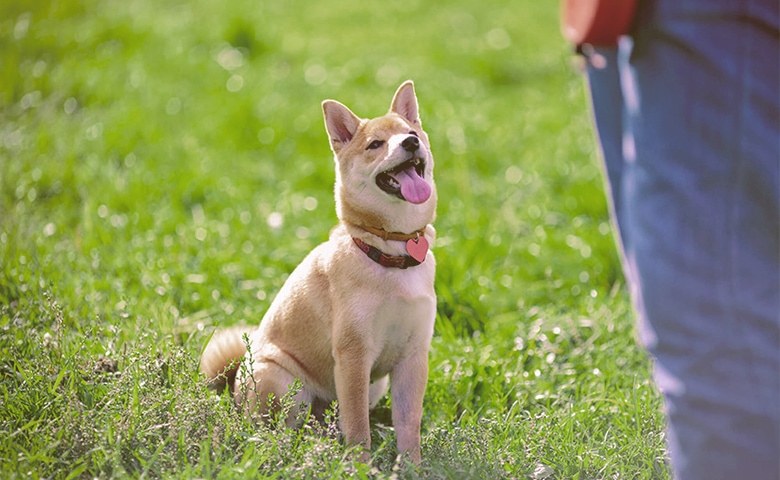
There are some things that you will want to avoid doing as you train your dog to follow your hand signals. The most important thing is to consistently use the same hand signal with each associated behavior. You may want to practice the hand signals yourself first and make sure that they are second nature to you before teaching your dog.
You will need to reinforce hand signals with your dog every so often. While you might teach your pet ten different signals, you may not use some of them very often. This is why it is helpful to go back to re-teach certain signals so that your dog does not forget them.
As much as possible, you will want to stick to either hand signals or verbal commands. While it might be helpful to teach your pet both of them, it can confuse them if you start to interchange them at will. You might use verbal commands around the house and then hand signals when in a noisy environment. If you do that consistently, then your dog will begin to understand.
Why Should You Even Bother Teaching Your Dog Hand Signals?
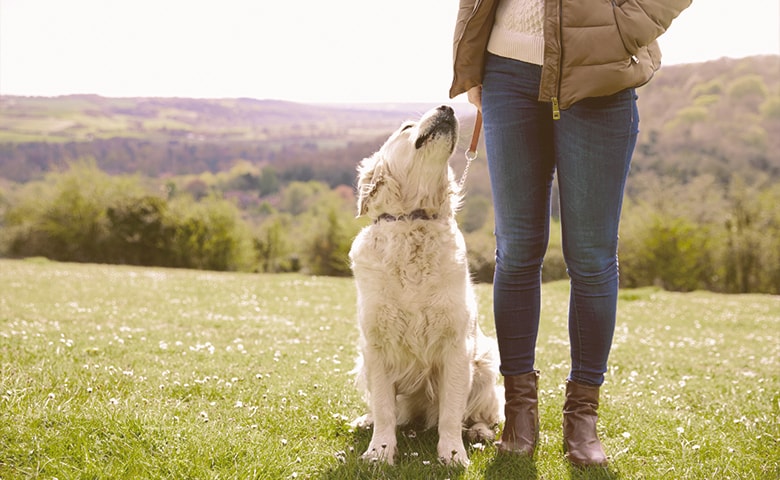
Since training your dog to respond to hand signals will take some work, you will understandably want to make sure it is worth it before you begin. There are actually quite a few reasons to go through this process with your dog. Some of these reasons include:
- Overcome the noise – There are times when there is simply too much noise around to get your dog to understand what you are trying to say. Hand signals will allow you to overcome that.
- Dogs develop hearing problems – Many dogs develop hearing issues as they age. If you teach your dog hand signals early on, this will really help when verbal commands can no longer be understood or heard.
- It is impressive – It is also worth mentioning that your family and friends will be impressed if your dog is able to respond easily to hand signals. It is also quite fun.
- Dogs understand body language – It is actually instinctive for your dog to understand what your body is trying to tell them, so training them is not as hard as you might think.
- Hand signals bring accuracy – It is estimated that a properly trained dog will respond to hand signals with 99 percent accuracy.
- They can be used to reinforce verbal commands – While hand signals only work if your dog is looking at you, they are also effective at reinforcing what you are telling them.
There is no downside to teaching your dog hand signals. Between developing hearing problems and quite frankly parlor tricks, the reasons for training are clearly numerous. Besides the listed benefits, hand signal training can create a potentially safer communication mechanism for you and your dog.
Wrap-Up
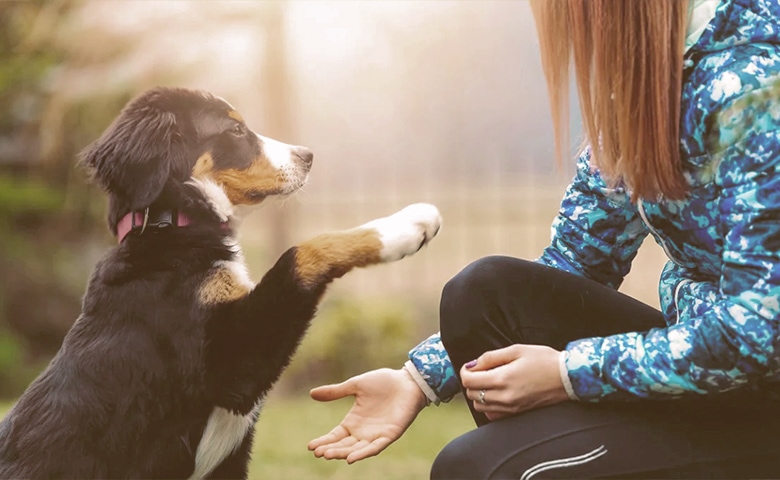
Using hand signals with your dog brings many advantages. It helps you communicate with your best friend when you are in a noisy environment. Using hand signals will also help your dog as they age should their hearing starts to go. While it does involve a process, training with hand signals can be done effectively if you are patient and calm with your dog.
Sources
The Spruce Pets
Primal Pet Foods
Labrador Training HQ

